Bringing the Outside In: Blurring the Line Between Cabin and Nature
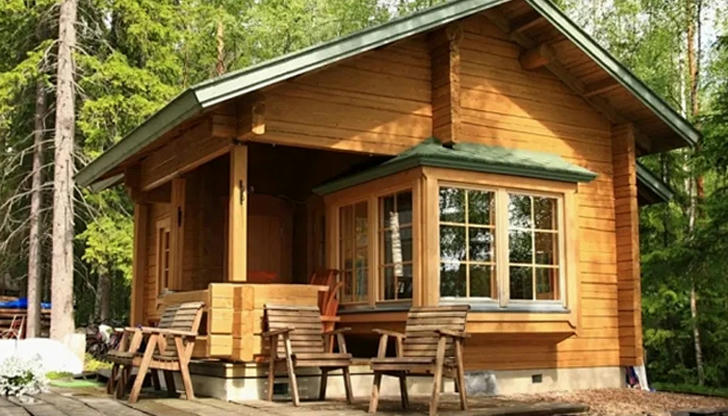
There's something magical about a cabin that doesn't just sit in nature---but belongs to it.
You open the door and the breeze follows you in. The scent of pine mixes with coffee. The light shifts with the clouds outside. The boundaries blur until you're not sure where the walls end and the forest begins.
That, in essence, is the beauty of "bringing the outside in."
It's not just a design trend---it's a philosophy of living. One that transforms a cabin from a wooden structure into a living, breathing extension of its surroundings.
So how do you achieve that seamless connection between your cabin and the wild world around it? Let's step inside (and outside) to explore.
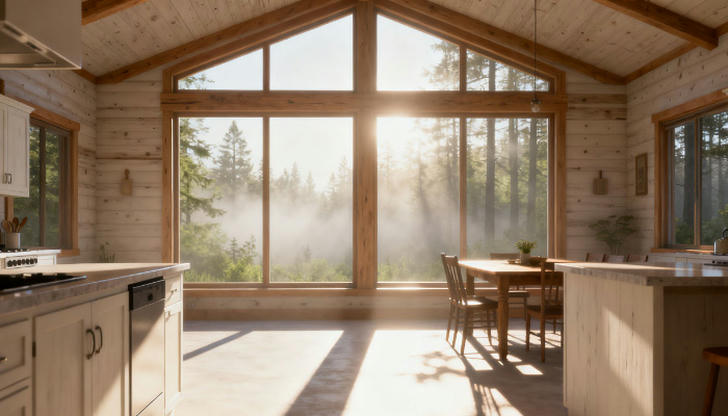
1. Let the Light Lead the Way
The easiest---and most transformative---way to connect your cabin with nature is through light.
Large, unobstructed windows invite the outdoors in, allowing sunlight to shift and dance across the wood grain throughout the day. Think floor-to-ceiling glass, clerestory windows tucked high under pitched roofs, or wraparound window walls that make the forest your wallpaper.
If you're designing from scratch, orient your cabin to the light---not just the view. Morning sun through the kitchen windows brings warmth to breakfast, while golden hour spilling across the living room turns evenings into art.
For existing cabins, swapping heavy drapes for sheer linen, or adding skylights and glass doors, can make a surprisingly huge difference.
As designer Jens Risom once said, "Light is the greatest luxury." In a cabin, it's also the bridge to the outdoors.
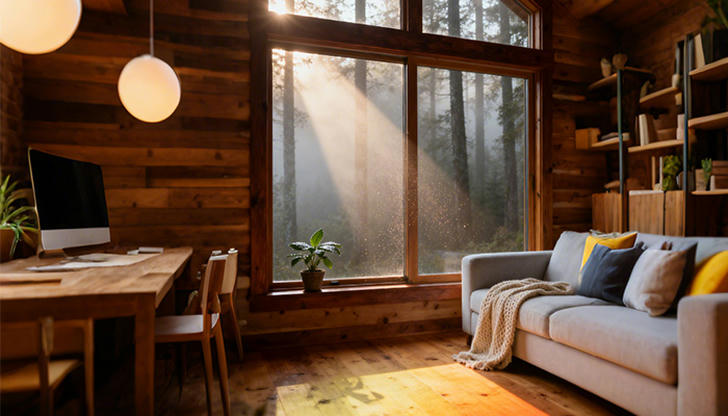
2. Choose Materials That Age Gracefully
A true cabin-in-nature aesthetic doesn't rely on perfection---it embraces patina.
Select materials that weather beautifully with time and echo the elements outside your door:
- Cedar, pine, or oak with visible knots and texture
- Stone or slate floors that feel cool underfoot and echo nearby rock formations
- Wool, jute, or linen fabrics that soften the visual weight of wood
And don't forget---your finishes don't have to be flawless. A little fading, a little wear, and a few rough edges only deepen the connection to the natural world.
In fact, design psychologists suggest that humans feel more relaxed around surfaces that show "natural imperfection." It reminds us that we, too, are part of nature's unfinished beauty.
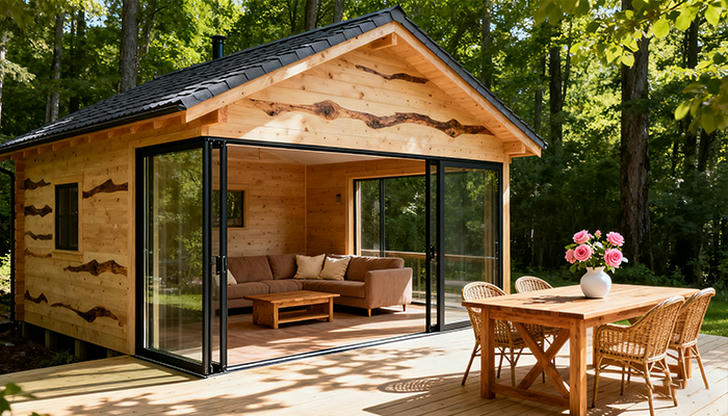
3. Open Up the Flow Between Indoors and Outdoors
If your cabin feels closed off, it might just need a better flow between spaces.
Consider a sliding glass door that opens onto a deck, or a folding wall that disappears entirely in summer. Even a small covered porch can act as a "transition zone" between inside comfort and outdoor adventure.
You can also blur the boundaries through layout:
- Extend the same flooring (like wide oak planks or flagstone) from your living room onto your patio
- Use similar color palettes---say, the deep greens of nearby pines inside your kitchen cabinets
- Line up furniture so the eye travels outward: a sofa facing a window, a dining table aligned with a mountain view
The goal is to make your cabin feel like a continuous experience, not two separate zones.
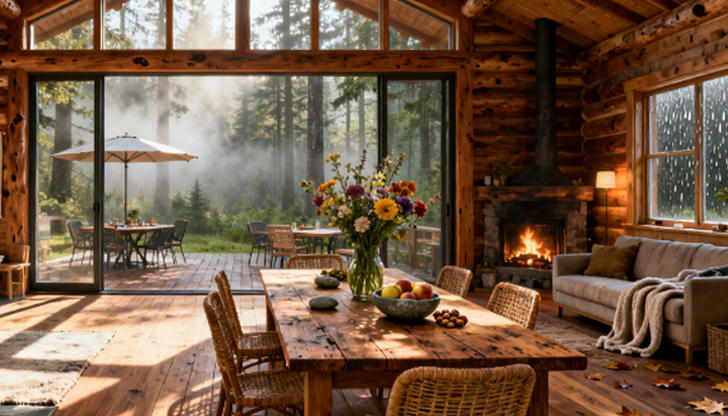
4. Bring Nature to the Table (Literally)
You don't need to live deep in the woods to infuse your cabin with natural energy.
Simple touches---like a vase of wildflowers, a bowl of river stones, or branches arranged in a tall ceramic jar---can instantly make your space feel alive.
Add organic patterns through textiles (think fern-printed throws or woven rattan rugs) or art that echoes your surroundings.
And when it comes to scent, skip synthetic candles. Instead, use cedar oil diffusers, beeswax candles, or fresh herbs drying above the stove---these small sensory cues make the connection to nature tangible, even on stormy days.
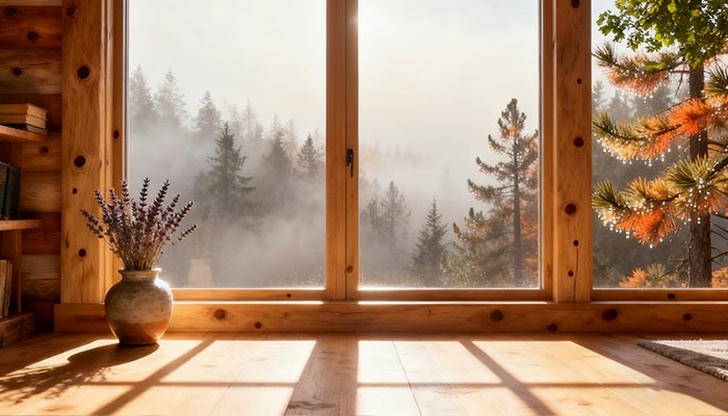
5. Design for the Seasons
A well-designed cabin doesn't resist nature---it moves with it. That means thinking seasonally: breezy and open in summer, cozy and layered in winter.
- Warmer months: Swap heavy rugs for bare floors, keep windows unobstructed, and bring the dining experience outside
- Colder months: Drape wool blankets, light the fireplace, and bring the forest glow in through warm lighting and darker tones
You can even create flexible furniture zones---like a reading nook that faces the window in spring, then turns toward the hearth in December. The trick is to design spaces that adapt, not stay static.
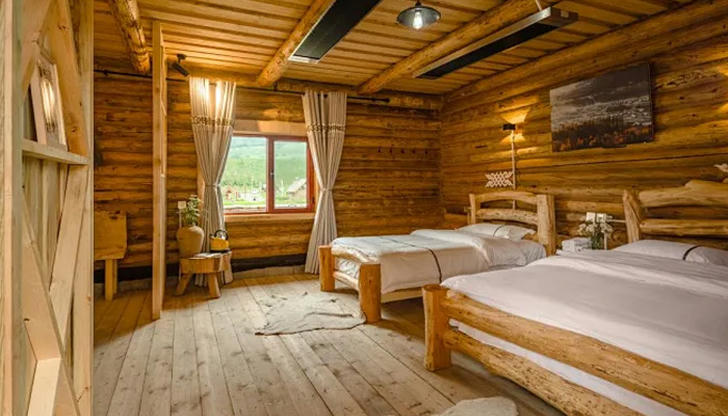
6. Let Sound and Silence Shape the Mood
We often think of design in terms of visuals---but sound is just as powerful. Let the natural soundtrack guide your design choices: the rustle of leaves, rain tapping on the roof, or birdsong at dawn.
If you're building new, consider sound-porous materials like wood panels and soft textiles to prevent echo and preserve that peaceful hush.
For existing cabins, open the windows more often---because sometimes the best interior soundtrack is the one nature provides.
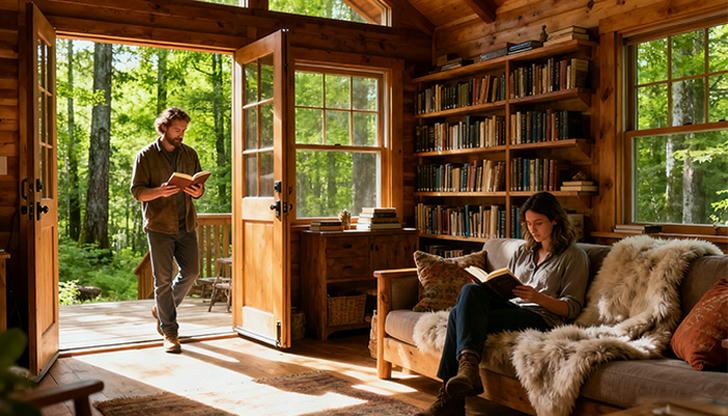
7. Live, Don't Decorate
Ultimately, "bringing the outside in" isn't about recreating a forest aesthetic. It's about creating a relationship---one where your home reminds you to pause, breathe, and stay connected to the rhythms beyond your walls.
When you start thinking this way, even your routines shift. You'll notice the way morning light paints the walls. You'll step outside barefoot more often. You'll find yourself listening instead of scrolling.
That's when your cabin stops being a retreat and becomes something more powerful---a place that teaches you how to live with nature, not just near it.
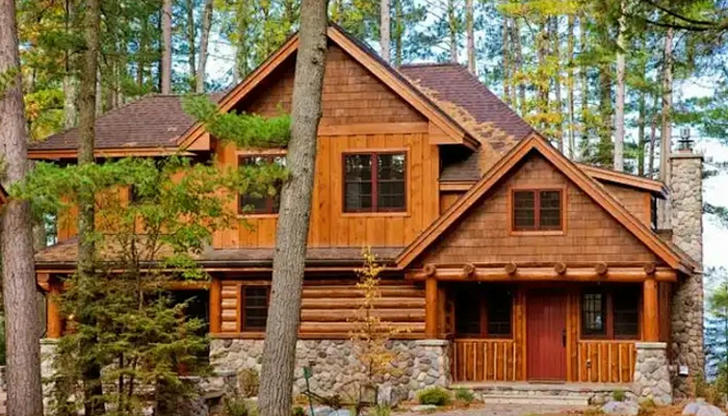
Final Thought
In a world that moves too fast and builds too high, cabins remind us of something deeply human: We were never meant to shut nature out---we were meant to build with it, breathe with it, and belong to it.
So next time you open your cabin door and feel the wind slip past you, don't close it too quickly.
That's nature saying welcome home.
